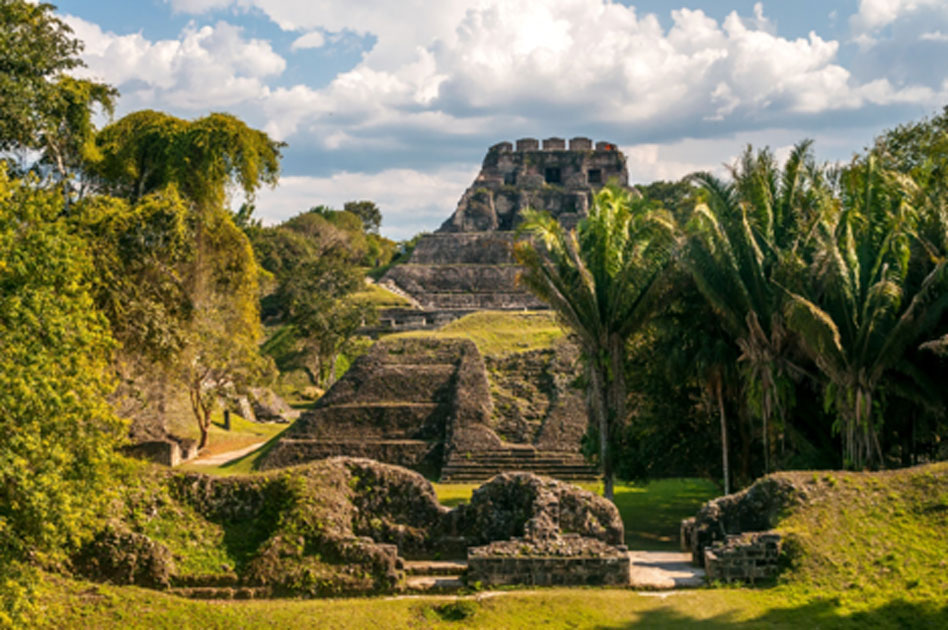The Ancient Maya Apparition Who Showed the Way to Xunantunich
The ancient Maya civilization was one of the most remarkable of all the many Mesoamerican cultures, not only because they wrote books and were lovers of chocolate, but also because many of their ruins and temples are still being discovered. Central America is fortunate to have many of their incredible remains and one of the most striking of these is Xunantunich, situated in Belize. It is one of the best-known historic sites in the country and it is of great international interest.
The History of Xunantunich in Belize
Xunantunich, located in an area that was dense with Maya settlement, was established in the Pre-Classical period (c 400 AD). It was originally a small village until it expanded during the late Classical Period (800-900 AD). Xunantunich’s growth was unusual since other Maya cities were in decline at this time due to decades of war and climate change. Its population may have increased because of an influx of migrants and refugees from other area.
Its late flourishing may also be related to the decline of the powerful city-state of Naranjo in modern-day Guatemala. It was possibly a colony of Naranjo and dominated politically by the larger city until its decline when the elite of Xunantunich then gained independence.
Based on the archaeological evidence, the city thrived for several decades and a number of monumental buildings were erected. For reasons still unclear, the pace of building slowed down in the 9 th century. The recording of dates, which was very important to the Maya - a nation obsessed with astronomy and time - ended in the same century.

The beautiful friezes that adorn the walls of the temple (Zhu / CC BY-NC 2.0)
Xunantunich was at least partially abandoned at some time after 830 AD. This may have been a result of an earthquake or possibly due to conflict. There is, however, evidence that it continued to be inhabited by some Maya well into the 10 th century. Xunantunich was eventually deserted until it was ‘rediscovered’ by a British archaeologist and with international support, the Belize government restored the site from 1996 to 1997.
The Legend of the ‘Stone Woman’
Xunantunich, which is a Yucatec Maya word, means ‘Stone Woman’. According to 19 th century local folklore, a man saw a beautiful Maya woman standing on a mound. Frightened by the figure, he ran to a local village and returned with a crowd only to find the woman gone. Where she had initially appeared, they found the mouth of the cave which extended under the complex of Xunantunich. The ghostly apparition became known as the Stone Woman and others have claimed to see the supernatural figure.
The Beautiful Friezes of El Castillo and Courts of Death
Surrounded by several miles of Maya settlements, the center of the site was situated on a man-made limestone ridge as it was important to the religious and ceremonial life of the region.
- Tomb of a Possible Royal Found at Ancient Maya Site of Xunantunich in Belize
- Remembering the Future: How Ancient Maya Agronomists Changed the Modern World
- Are archaeologists on the verge of yet another discovery of an ancient Mayan city?

A walkway along the temple at Xunantunich (Zhu / CC BY-NC 2.0)
The most impressive remain at Xunantunich is the main temple, known as El Castillo, which stands over 110 feet (40m) high. A flight of steps leads up to a complex of buildings which were homes of the elite, shrines, and rooms used for administrative purposes. A number of remarkably preserved friezes that represent Mayan deities, the ‘tree of life’, and astronomical symbols adorn the walls.
Other relics which remain at the site are the plaza, an area used for rituals and ceremonies and once surrounded by the more homes of the elite, a ballcourt where those who lost a game were often ritually sacrificed, and the recent discovery of an important tomb, in which many beautiful items have been discovered.

Xunantunich from above. By wollertz / Adobe Stock
Getting to Xunantunich from Belize City
The archaeological site is about 70 miles (110 kilometers) from Belize City and is located near the San Jose Succotz village. Accommodation near Xunantunich is plentiful it is possible to hire a guide at the visitors’ center.
For those who love archeology and exploring ancient sites, there are a number of other Mayan sites in the vicinity of the Xunantunich, both in Belize and in Guatemala. And for lovers of more strenuous adventures, a nature park close by offers a variety of attractions such as kayaking.
Top image: Xunantunich Temple . Credit: milosk50 / Adobe Stock
By Ed Whelan
References
LeCount, L. J., & Yaeger, J. (Eds.). (2010). Classic Maya Provincial Politics: Xunantunich and Its Hinterlands. University of Arizona Press
LeCount, L. J., Yaeger, J., Leventhal, R. M., & Ashmore, W. (2002). Dating the rise and fall of Xunantunich, Belize: A Late and Terminal Classic lowland Maya regional center. Ancient Mesoamerica, 13(1), 41-63
Leventhal, R. M., & Ashmore, W. (2004). Xunantunich in a Belize Valley context. The ancient Maya of the Belize Valley: half a century of archaeological research, 168-179




















Comments
"The recording of dates, which was very important to the Maya - a nation obsessed with astronomy and time - ended in the same century."
Correction: Astrology which encompassed "Astronomy". This is not an obsession.
How do we know that the Maya sacrificed the losers of a game? We don't and we have no evidence of anything like this that took place.
Conclusions such as this are in the mind of people who say that they have studied ancient civilisations but they are susceptible to drawing invalid conclusions and proclaiming it as fact.